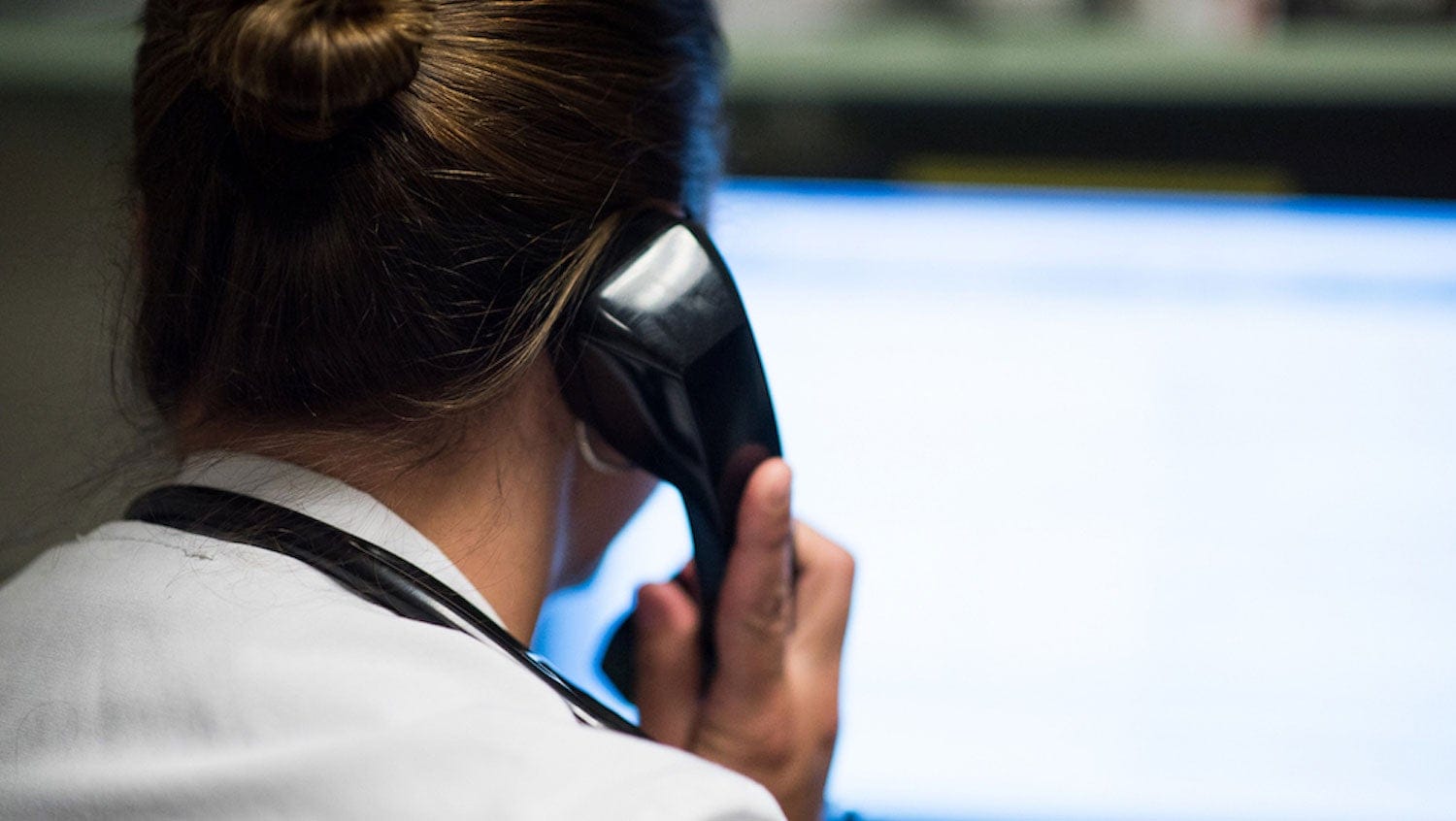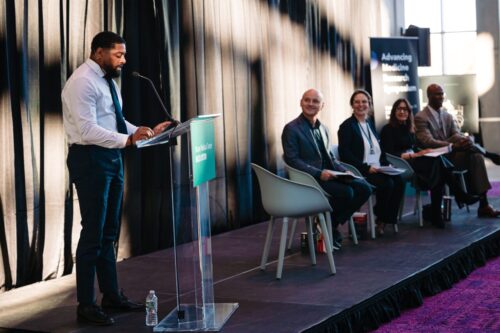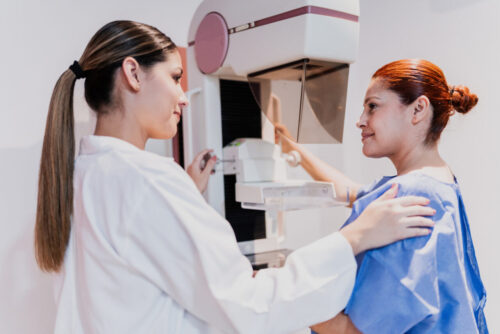
Matthew Morris
This hospital is harnessing the EHR to screen and refer for social determinants to improve patient care.
The social determinants of health (SDOH) are finally being shown into the exam room. Spurred by the shift to value-based care, health systems around the country are beginning, in fits and starts, to incorporate screening tools for social determinants of health into primary care and other clinical settings.
The halting adoption of SDOH screening can be attributed not only to the culture change involved, but also to operational challenges. One big speed bump has been the difficulty of finding time for social-needs screening in office visits that are already jammed. Adding screening to the electronic health record (EHR) — and streamlining what otherwise threatens to be a taxing, paper-laden process — has therefore emerged as an important part of the solution.
A handful of enterprising health systems have pushed ahead and developed their own EHR-based screening tools. The EHR industry, meanwhile, has responded to the growing demand by developing modules — like Epic’s Healthy Planet — that enable screening for social determinants and are likely to accelerate its widespread use.
THRIVE: BMC’s social determinants of health screening
At Boston Medical Center (BMC), senior manager of mission program development Stephanie Losi and primary care physician Pablo Buitron de la Vega, MD, have witnessed this evolution of the EHR at close range, having led a collaborative multiyear effort to develop and refine BMC’s own custom screening and referral program, known as THRIVE, which is now found in all of the hospital’s ambulatory primary care clinics. THRIVE was adapted from a pediatric evidence based model developed by Dr. Arvin Garg called WE CARE.
Delivered at the front desk when a patient arrives, THRIVE asks about social needs across eight domains, including housing, food insecurity, transportation, and employment. Even more important, patients can request help with resources, and providers are automatically prompted during that clinic visit to share referral guides with one simple click in Epic. Soon, care team members will be able to electronically notify community partners of referrals as well.
Losi and Buitron de la Vega are planning an important new phase for THRIVE this summer, when they’ll navigate an Epic upgrade and extend THRIVE into BMC’s emergency department, the busiest ED in New England. They caught their breath just long enough to chat with HealthCity about what they’ve learned from the THRIVE roll-out and how they’re harnessing the EHR and the data it provides to improve patient care.
HealthCity: THRIVE will be used in the ED for the first time this year. Is the move to the ED forcing you to adapt the tools or the approach?
Stephanie Losi: We’re beginning to test out the process now to see what tweaks will be needed. We’re working with key stakeholders and staff to understand the workstream of the ED, and to customize a workflow that facilitates screening and referrals without negatively impacting flow. Seamless workflow design should help with adoption and ensure we can begin to capture the social needs of a subset of our patients that may never come to ambulatory.
Simultaneously, we’re working hard to make sure the THRIVE Directory, our web-based resource referral platform, is enhanced, easy to use, and embedded into Epic so that it’s readily available in a very busy ED setting. When we get to the ED, we’ll be screening more than 100,000 people each year, which is double the number of primary care patients we’ve screened to date. Anything we can do to reduce time spent searching and documenting is vital. From a technology standpoint, we’re constantly thinking about how to reduce the clicks. It’s almost that Steve Jobs mentality of, “I want it down to two clicks.”
How can we reduce the clicks? It’s almost that Steve Jobs mentality of, “I want it down to two clicks.”
HC: Why is streamlining the process and the technology so important?
Pablo Buitron de la Vega: As a primary care provider, I experience on a daily basis the challenge of caring for patients with high medical and social complexity. It’s very hard to provide care to this population within the allocated time. That’s part of the reason why primary care provider burnout in as high as 50% across the country. If you ask a provider to do something extra, they’re overwhelmed, they already have a lot on their plate. We really wanted to help providers instead of adding a burden.
That’s why using EPIC to streamline the screening and referral process is so important. As a provider, I want to be aware that my patient is homeless or food insecure, without spending extra time. I want to have that awareness so I can incorporate it in my plan, and then I can connect the patient to a navigator or give them resource guides with one click and one print. Anything more complicated than that is not going to be feasible.
HC: What about the patient experience? How has THRIVE affected a typical patient visit?
PBDLV: Here at BMC, we interact with a community that’s socially complex. At the end of the visit, or during the visit, patients often bring up their social needs. And you want to be able to help them, so they feel they’re coming to a place where we provide comprehensive care by addressing medical, behavioral, and social factors. We want to provide our patients with the same opportunities to thrive regardless of their race, ethnicity, immigration status, or socioeconomic status. That’s what we set out to achieve with THRIVE.
We did a study and started calling patients to learn their impressions of the program. We found out they, too, were feeling, “This is not only a medical visit. They’re trying to take care of everything, and that’s going to make a difference.”
If you think about the overall care of the patient, THRIVE might add two or three minutes at the end of the visit. That’s a great time investment if one of the THRIVE resources can help address my patient’s adverse social determinants of health and free up time in future visits to address other important behavioral and medical complexities. We have an incredible amount of evidence-based treatment options nowadays that work in control settings. If we don’t address social needs, those treatments will have little or no impact in our patient population.
HC: You’ve now screened more than 50,000 patients. How are you harnessing all of that data?
SL: We’re now in the process of overlaying other existing data. Now that we have social-needs data, we can begin to understand the extent of the impact on chronic disease or healthcare utilization. We can also do zip code searches and find hot spots. If we’re seeing food insecurity as a significant need in a particular neighborhood or zip code, we can perform root cause analysis and ask, “What’s happening in that neighborhood? Is there a cost or access issue? What can we do in collaboration with the community to help?”
We’re beginning to develop domain-based interventions. We saw very quickly that housing was a huge issue, so we took steps as an institution to address that last year. This year, we’re developing pilots with a few social-service organizations to address food insecurity and study the impact of access to healthy food on health outcomes and utilization.
HC: How do envision these analytics and insights impacting patient care in the long run?
PBDLV: The whole idea of THRIVE is to prevent social complexity by catching patients early and understanding root causes. Same as how we now tackle cardiovascular disease. We screen and find out which patients are hypertensive, or need an aspirin or statin, to prevent them from having a heart attack or stroke. We want to start learning who does well with a low-touch intervention, such as a resource guide, and who benefits from a medium-touch intervention, such as meeting with a patient navigator. Analyzing that data will be key to using and tailoring our resources effectively.
If you think about the research or the academic part of this, there’s still no evidence that universal screening for social needs can impact health outcomes or utilization. Not because we haven’t been able to prove it, but because there are very few institutions in the country that do universal screening for social needs. We want to use our data and future interventions to answer that important question.
Do screening and referrals for social needs decrease mortality, utilization, ED visits? We really want to understand how to help move all of these patients with high social complexity out of the poverty cycle.
HC: BMC was an early adopter in screening for social needs. What changes in the healthcare industry as a whole are you hoping to inspire or influence with THRIVE?
SL: We know that our goal — improving the overall health of our patients and community by sustainably and systemically addressing health-related social needs — can’t be accomplished in a month or a year. It’s a multiyear journey of continuous improvement and incremental wins. We also know we can’t accomplish this culture shift on our own. Achieving this lofty goal is a team sport, and we want to engage and collaborate with individuals across disciplines, organizations, sectors, and states, so that we learn faster and get there sooner.
We hope to inspire confidence that helping patients address social needs is feasible for hospital systems, and to prove that it’s a win/win/win strategy that all hospitals and states should adopt. Patients win when their health improves, institutions win as healthcare costs decrease, and the community wins as more amazing people are able to contribute.
This interview has been edited and condensed.


